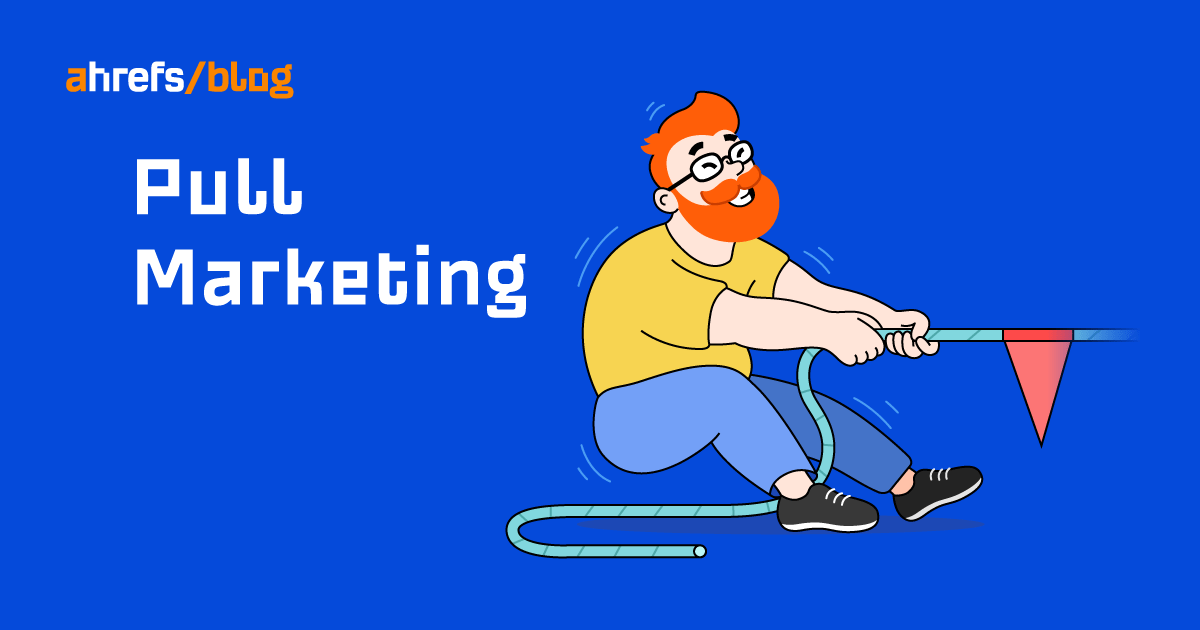Google AI Overviews (Formerly Google SGE): All You Need to Know
Is SEO dead and should you panic? Or is everything a big hoo-ha and there’s nothing to worry about? Here’s everything we know about Google’s AI Overviews to date: Google’s AI Overviews are AI-generated summaries for search queries. Google...
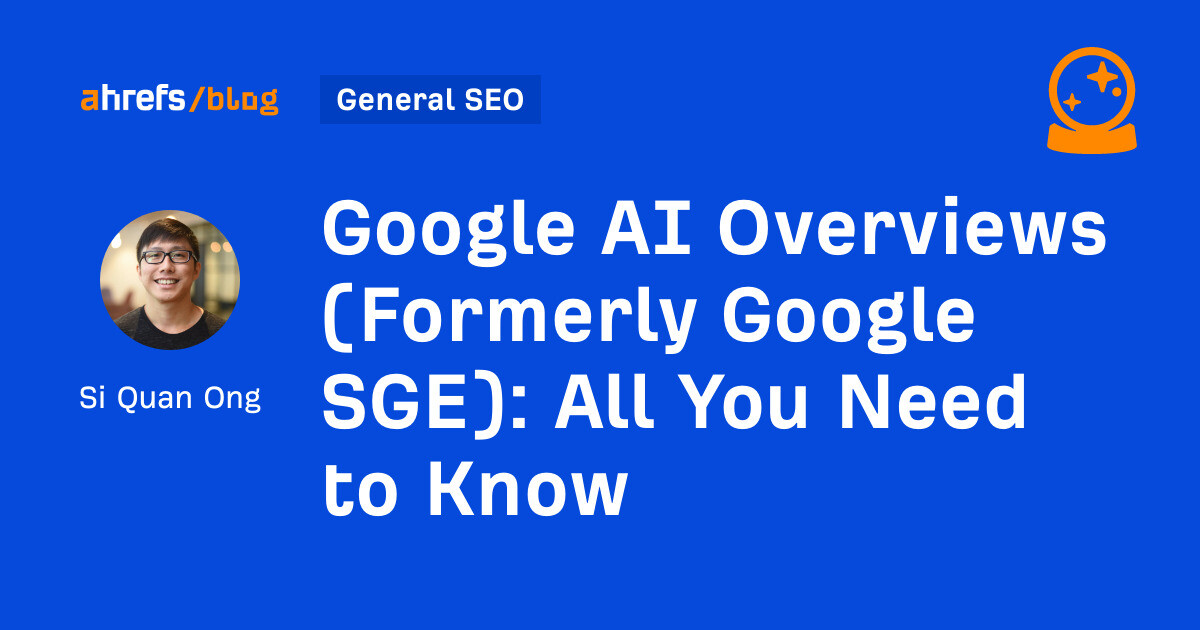
Google officially launched AI Overviews in the U.S. on May 14, 2024. Three months later, they announced that AI Overviews was rolled out to six more countries: the UK, India, Japan, Indonesia, Mexico, and Brazil. Is SEO dead and should you panic? Or is everything a big hoo-ha and there’s nothing to worry about? Here’s everything we know about Google’s AI Overviews to date: Google’s AI Overviews are AI-generated summaries for search queries. Google aims to answer the query directly within the SERPs, with links to webpages for further research. The easiest way to think about them is that they are featured snippets on steroids. Originally named Search Generative Experience (SGE), AI Overviews is part of Google’s response to the accelerated rise of generative AI. In September 2023, Google filed a patent for their AI Overview called “Generative summaries for search results”. Thanks to Rich Sanger, who looked at the patent, we have an idea of how Google’s AI Overviews work: The most important question, at least for SEOs, is how the system selects the sources. There are three main criteria: I highly recommend reading Rich Sanger’s article on how AI Overviews work, as it goes into deep detail on the patent. You should care about AI Overviews if you want to continue to get search traffic from Google. AI Overviews is the direction that Google is moving towards and it’s unlikely they will abandon their efforts or return to Google pre-SGE. According to Sundar Pichai, the CEO of Google, AI has been transforming Google Search for years. “When mobile came, we knew Google Search had to evolve a lot. We call it featured snippets, but for almost 10 years now you go to Google for many questions we kind of use AI to answer them. We call it web answers internally. … We’ve always answered questions where we can. But we always felt when people come and look for information. People, in certain cases, want answers but they also want the richness and the diversity of what’s out there in the world and it’s a good balance to be had and we’ve always I think struck that balance pretty well.” Currently, Google still has the largest market share in the world. And the rise of other AI-based search engines has (so far) not made a dent on Google either. Are you upset that Google is ‘stealing’ your content to train their AI models? The bad news: You can’t opt out of AI Overviews, as Google considers it a search feature. The good news: You can block Google using the standard methods of noindexing your pages or using robots.txt. Bear in mind that this is a drastic measure, as it prevents Google from both showing your content in AI Overviews and the SERPs. However, Google does provide an alternative method: ‘preview controls’, which are a way to tell Google not to provide a snippet in the SERPs or limit the amount of content that can be used. Glenn Gabe ran an experiment to test whether Google would respect this. The result? It did, but it took some time (and even a ping to Google’s John Mueller) for it to finally work. Regardless, it is an option if you want to opt out of AI Overviews. Though there are ‘consequences’ (i.e. no search snippet), as Glenn Gabe discovered: Ever since Google announced SGE, countless studies have been conducted to observe the impact AI Overviews had on the SERPs. Here’s what we know so far: Unfortunately for all of us, Google will not distinguish between AI Overviews and organic search in Google Search Console. They will lump all the impressions and clicks together. So, if you’d like to track the visibility of AI Overviews for important queries, you’ll have to use third-party tools like ZipTie. Bear in mind that AI Overviews are still volatile, appearing and disappearing for different keywords. Third-party tools may also struggle to keep up, considering that search queries will become more conversational and long-tailed. Finally, the purpose of AI Overviews is to provide personalized summaries. This element will be missing when it comes to tracking, especially regarding linked sources. Sidenote. We’re working on tracking AI Overviews in Ahrefs. Stay tuned for updates! Considering that Google seems to be aligning AI Overviews with organic results, your best bet is to continue following SEO best practices and aim to rank high on Google itself. In fact, if we look at Rich Sanger’s recommendations from his latest study on AIOs, you’d find that it is essentially SEO basics: In short, even though Google has now introduced AI Overviews, the fundamentals of SEO are still the same. You need to: However, given that the overlap is still not 100%, it could suggest a potential avenue for ‘information gain’ to be rewarded. To put it in layman’s terms, Google wants to reward new information, not copycat content. In fact, when Rich Sanger analyzed the patent, it suggested that Google was indeed looking for diversity: “But understand that the AI Overview doesn’t only provide documents from the top sources for that query. It seeks out diversity. If the top-ranked content for that query is homogenous, it will move on to closely related queries. Earning top page rankings along with visibility in the AI Overview for targeted queries is the best case scenario.” How can you add ‘information gain’ to your content? There are three ways: Our Director of Content Marketing Ryan Law expands on each concept in his article on standing out from AI content. I highly recommend reading it. This is everything we know about Google’s AI Overviews so far. It’s still a volatile feature, so expect many things to change as Google continues to experiment. However, whether it’s organic search results or AI Overviews, good SEO doesn’t change. So, carry on with executing the fundamentals of SEO to perfection.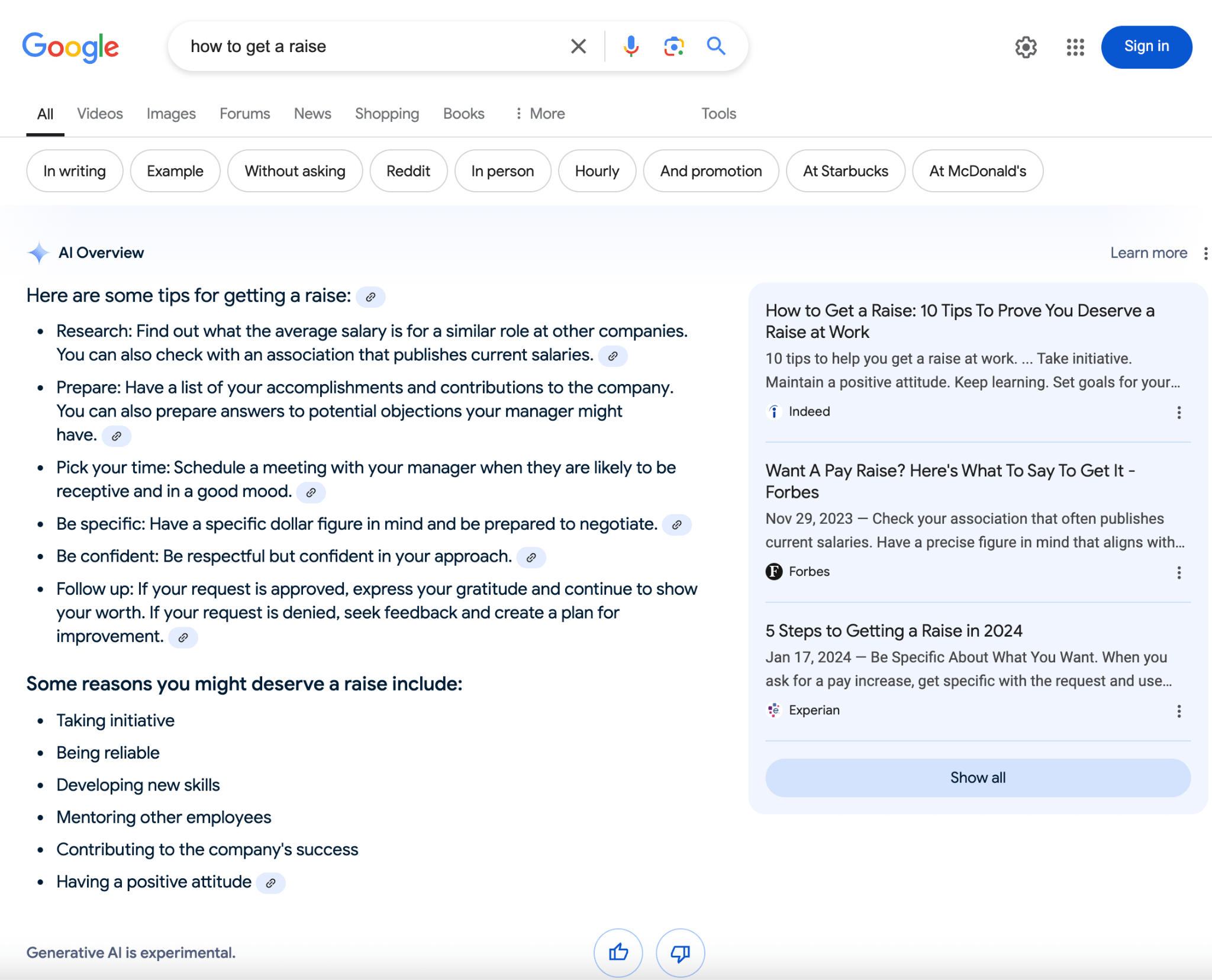
 10 May 2023 — Google announces the Search Generative Experience (SGE) experiment25 May 2023 — Google opens access to SGE for users who signed up for the waitlist.22 March 2024 — Google starts testing AI Overviews in the main Google Search results, even if you had not opted into SGE.14 May 2024 — Google officially launches AI Overviews for the U.S. Google also launches a new ‘Web’ filter for users who want only text-based webpages in search results.24 May 2024 — AI Overviews come under fire for giving dangerous and wrong answers. For example, it recommended using non-toxic glue to give pizza sauce more tackiness, eating at least one small rock a day, and drinking urine to pass kidney stones quickly.30 May 2024 — Google responds to the brouhaha by explaining how it intends to improve AI Overviews.15 Aug 2024 — Google launches AI Overviews for the UK, India, Japan, Indonesia, Mexico, and Brazil. It also begins showing AI Overviews for Incognito mode and users who are not signed in. Additionally, it launches the ability to “save” a specific AI Overview and tests adding links to relevant web pages directly within the text of AI Overviews.23 Aug 2024 — Google’s John Mueller confirms that AI Overviews are affected by core updates.
10 May 2023 — Google announces the Search Generative Experience (SGE) experiment25 May 2023 — Google opens access to SGE for users who signed up for the waitlist.22 March 2024 — Google starts testing AI Overviews in the main Google Search results, even if you had not opted into SGE.14 May 2024 — Google officially launches AI Overviews for the U.S. Google also launches a new ‘Web’ filter for users who want only text-based webpages in search results.24 May 2024 — AI Overviews come under fire for giving dangerous and wrong answers. For example, it recommended using non-toxic glue to give pizza sauce more tackiness, eating at least one small rock a day, and drinking urine to pass kidney stones quickly.30 May 2024 — Google responds to the brouhaha by explaining how it intends to improve AI Overviews.15 Aug 2024 — Google launches AI Overviews for the UK, India, Japan, Indonesia, Mexico, and Brazil. It also begins showing AI Overviews for Incognito mode and users who are not signed in. Additionally, it launches the ability to “save” a specific AI Overview and tests adding links to relevant web pages directly within the text of AI Overviews.23 Aug 2024 — Google’s John Mueller confirms that AI Overviews are affected by core updates.
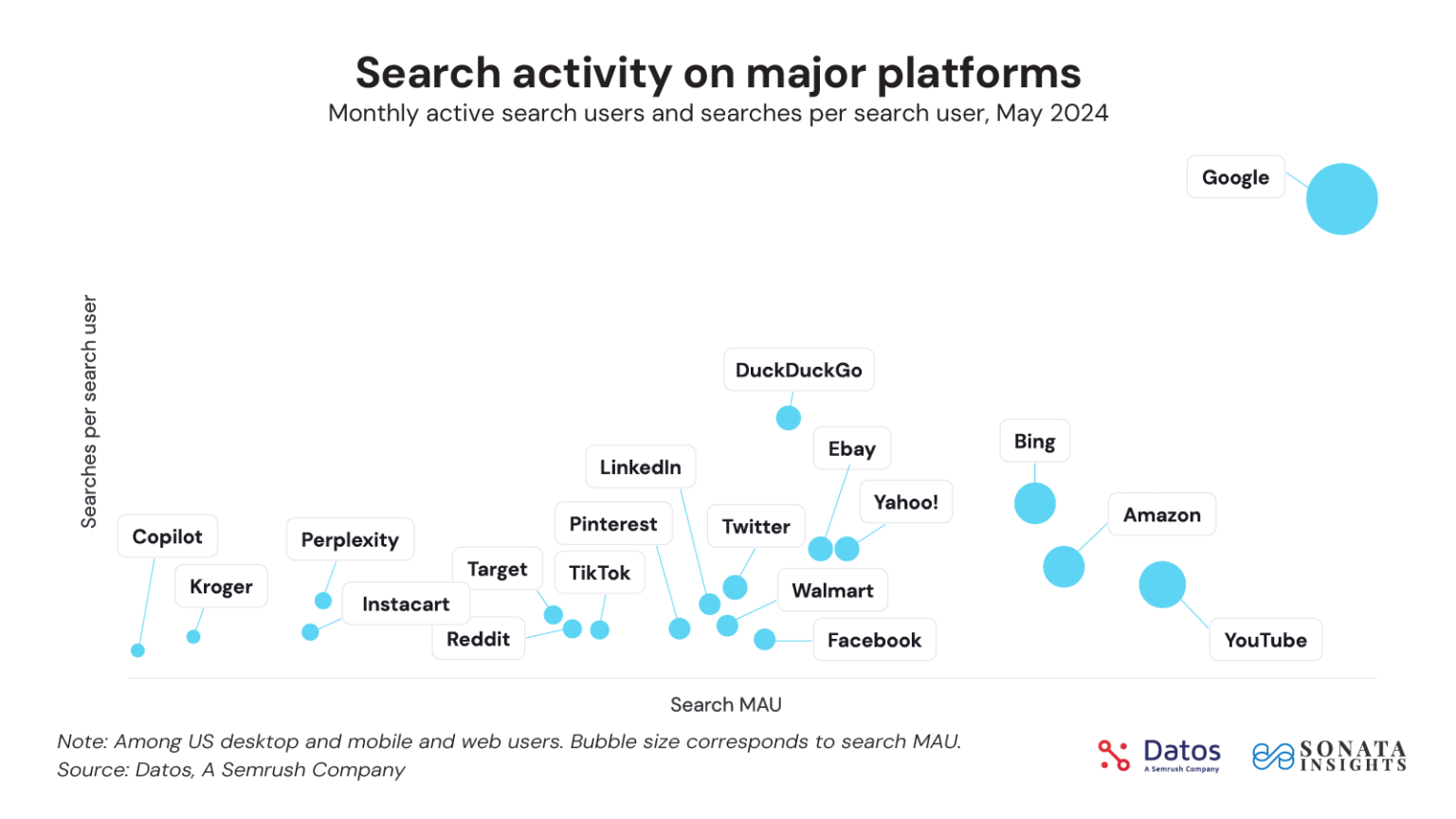


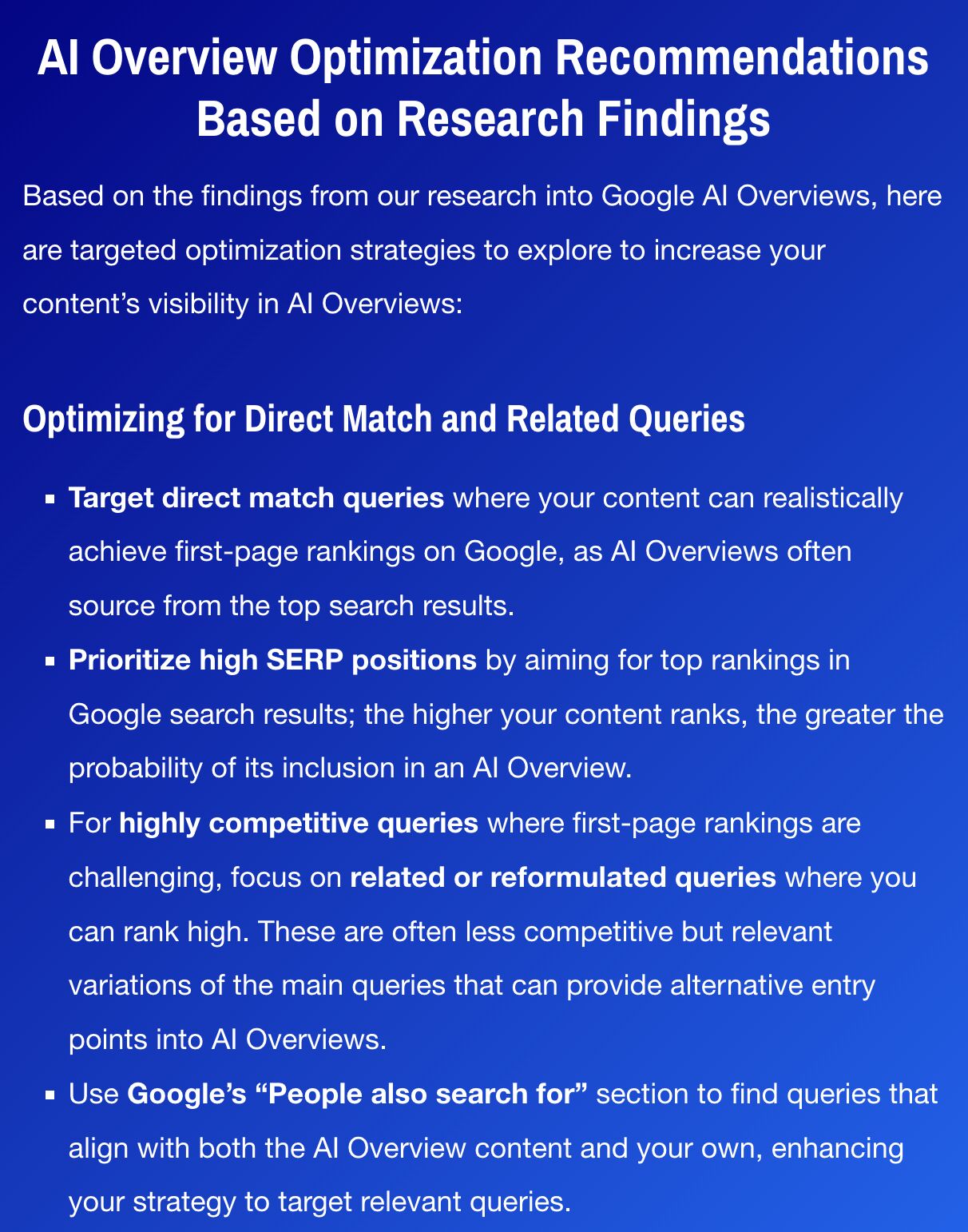
Final thoughts

 FrankLin
FrankLin 








